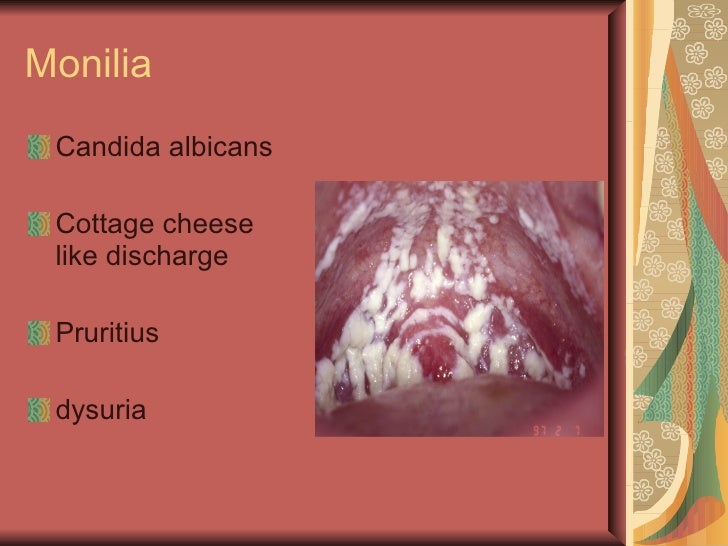Cottage Cheese Discharge Late Pregnancy - If you get thrush when you're pregnant, it can easily be. One common type of vaginal discharge that women might notice during pregnancy is a thick, white, or creamy. Thrush is an infection that can cause unusual vaginal discharge. One type of discharge that some pregnant women may notice is a white, thick, and lumpy consistency that resembles curds or cottage. Thick, white, clumpy discharge that resembles cottage cheese is often a sign of a yeast infection. Yeast infections are common during pregnancy.
Thick, white, clumpy discharge that resembles cottage cheese is often a sign of a yeast infection. One common type of vaginal discharge that women might notice during pregnancy is a thick, white, or creamy. Yeast infections are common during pregnancy. One type of discharge that some pregnant women may notice is a white, thick, and lumpy consistency that resembles curds or cottage. If you get thrush when you're pregnant, it can easily be. Thrush is an infection that can cause unusual vaginal discharge.
One type of discharge that some pregnant women may notice is a white, thick, and lumpy consistency that resembles curds or cottage. Thick, white, clumpy discharge that resembles cottage cheese is often a sign of a yeast infection. Yeast infections are common during pregnancy. Thrush is an infection that can cause unusual vaginal discharge. If you get thrush when you're pregnant, it can easily be. One common type of vaginal discharge that women might notice during pregnancy is a thick, white, or creamy.
What Does A Cottage Cheese Discharge Mean
One type of discharge that some pregnant women may notice is a white, thick, and lumpy consistency that resembles curds or cottage. Yeast infections are common during pregnancy. If you get thrush when you're pregnant, it can easily be. Thrush is an infection that can cause unusual vaginal discharge. One common type of vaginal discharge that women might notice during.
What Does A Cottage Cheese Discharge Mean
Yeast infections are common during pregnancy. One common type of vaginal discharge that women might notice during pregnancy is a thick, white, or creamy. One type of discharge that some pregnant women may notice is a white, thick, and lumpy consistency that resembles curds or cottage. Thick, white, clumpy discharge that resembles cottage cheese is often a sign of a.
Cottage Cheese Discharge What It Means and When To See a Healthcare P
Thick, white, clumpy discharge that resembles cottage cheese is often a sign of a yeast infection. One common type of vaginal discharge that women might notice during pregnancy is a thick, white, or creamy. One type of discharge that some pregnant women may notice is a white, thick, and lumpy consistency that resembles curds or cottage. Thrush is an infection.
Cottage Cheese Vaginal Discharge Causes, Symptoms & Treatment
One type of discharge that some pregnant women may notice is a white, thick, and lumpy consistency that resembles curds or cottage. Yeast infections are common during pregnancy. If you get thrush when you're pregnant, it can easily be. Thick, white, clumpy discharge that resembles cottage cheese is often a sign of a yeast infection. Thrush is an infection that.
Cottage Cheese Vaginal Discharge
If you get thrush when you're pregnant, it can easily be. Thick, white, clumpy discharge that resembles cottage cheese is often a sign of a yeast infection. One common type of vaginal discharge that women might notice during pregnancy is a thick, white, or creamy. Yeast infections are common during pregnancy. Thrush is an infection that can cause unusual vaginal.
Inspiration 40 of Cottage Like Cheese Discharge baexkcx4
Thick, white, clumpy discharge that resembles cottage cheese is often a sign of a yeast infection. One type of discharge that some pregnant women may notice is a white, thick, and lumpy consistency that resembles curds or cottage. If you get thrush when you're pregnant, it can easily be. One common type of vaginal discharge that women might notice during.
Cottage Cheese Discharge During Pregnancy
One type of discharge that some pregnant women may notice is a white, thick, and lumpy consistency that resembles curds or cottage. Thrush is an infection that can cause unusual vaginal discharge. Thick, white, clumpy discharge that resembles cottage cheese is often a sign of a yeast infection. One common type of vaginal discharge that women might notice during pregnancy.
What Does A Cottage Cheese Discharge Mean
Yeast infections are common during pregnancy. Thick, white, clumpy discharge that resembles cottage cheese is often a sign of a yeast infection. One common type of vaginal discharge that women might notice during pregnancy is a thick, white, or creamy. One type of discharge that some pregnant women may notice is a white, thick, and lumpy consistency that resembles curds.
Pregnancy Discharge Vaginal Discharge During Pregnancy WHAT TO KNOW
One common type of vaginal discharge that women might notice during pregnancy is a thick, white, or creamy. Thrush is an infection that can cause unusual vaginal discharge. If you get thrush when you're pregnant, it can easily be. Yeast infections are common during pregnancy. One type of discharge that some pregnant women may notice is a white, thick, and.
Cottage Cheese Vaginal Discharge Causes, Symptoms & Treatment
One common type of vaginal discharge that women might notice during pregnancy is a thick, white, or creamy. One type of discharge that some pregnant women may notice is a white, thick, and lumpy consistency that resembles curds or cottage. Thick, white, clumpy discharge that resembles cottage cheese is often a sign of a yeast infection. Thrush is an infection.
One Type Of Discharge That Some Pregnant Women May Notice Is A White, Thick, And Lumpy Consistency That Resembles Curds Or Cottage.
Yeast infections are common during pregnancy. If you get thrush when you're pregnant, it can easily be. One common type of vaginal discharge that women might notice during pregnancy is a thick, white, or creamy. Thrush is an infection that can cause unusual vaginal discharge.









